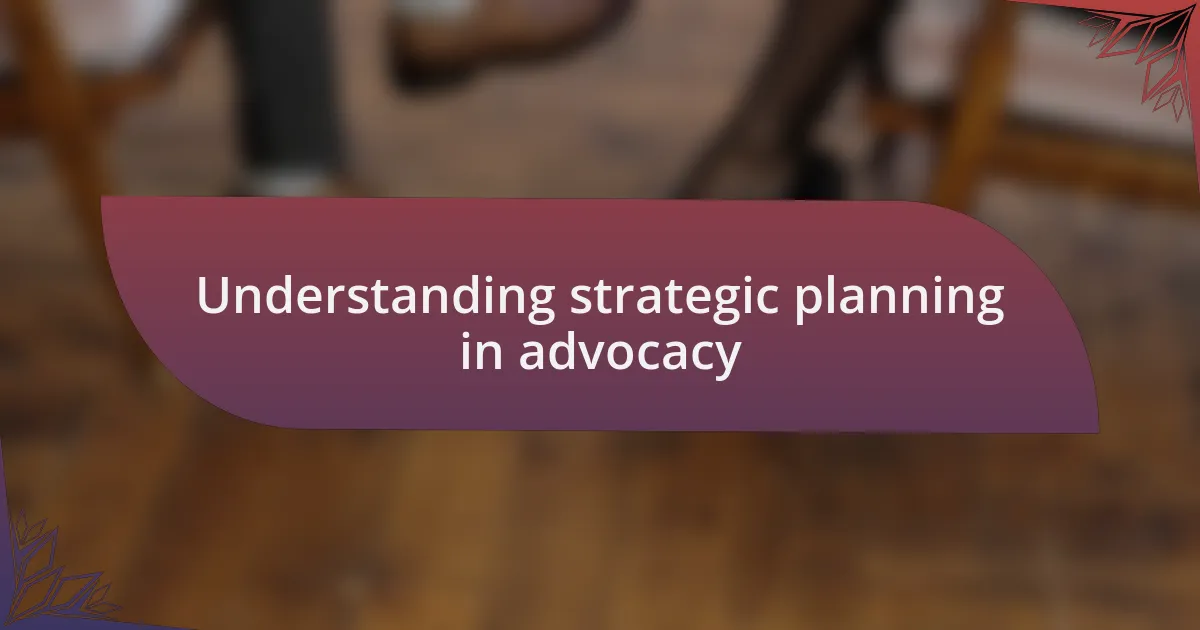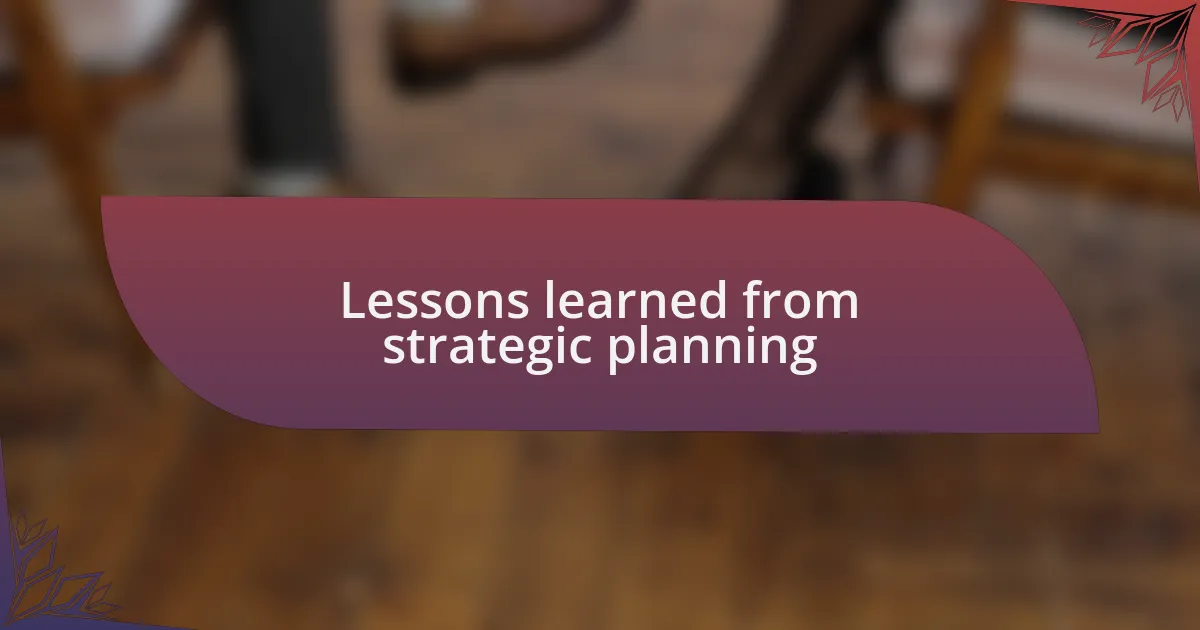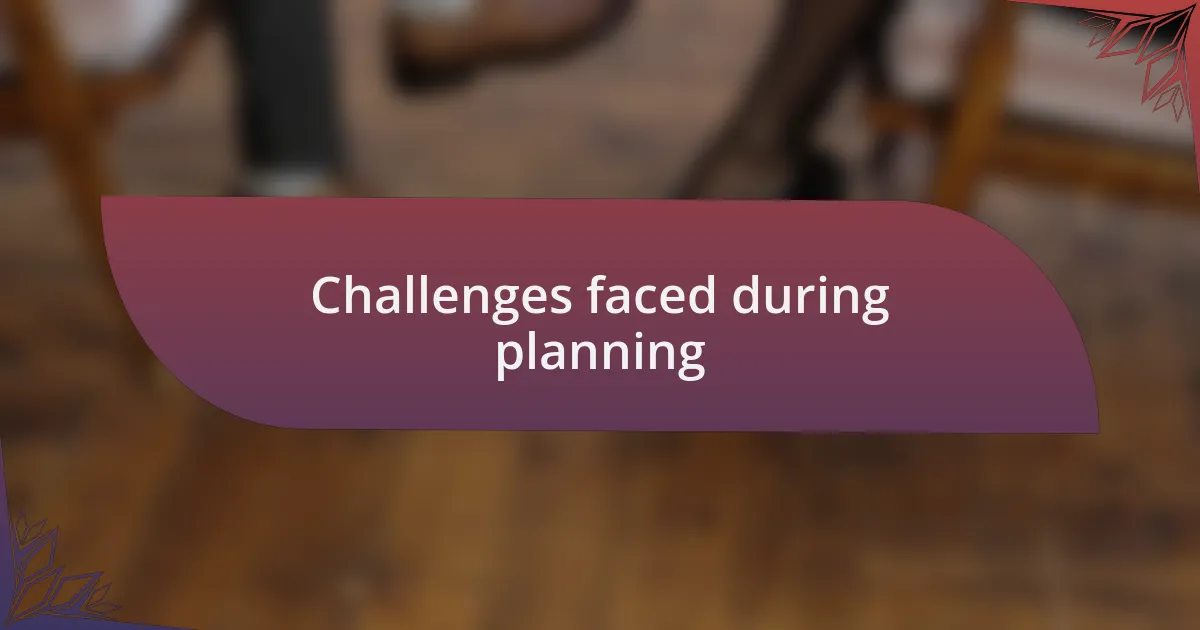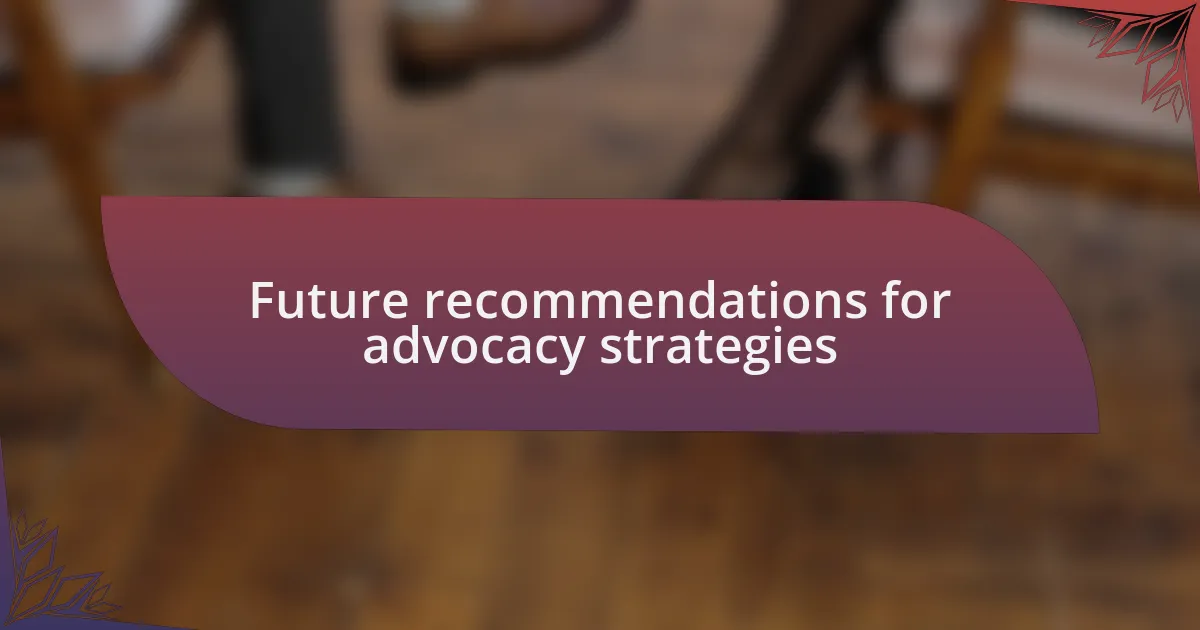Key takeaways:
- Clear vision and mission are essential for effective strategic planning in advocacy.
- Flexibility and adaptability are crucial as circumstances change and new information emerges.
- Community engagement and relationship-building enhance advocacy efforts and enrich understanding of the target audience.
- Incorporating storytelling can make advocacy messages more relatable and impactful.

Understanding strategic planning in advocacy
Strategic planning in advocacy is truly a roadmap that guides organizations towards their goals. I remember when I first encountered this concept; it felt overwhelming yet exciting. How do you prioritize causes that tug at your heart while ensuring broad community impact?
It’s crucial to understand that every advocate must define their vision and mission clearly before diving into strategic planning. I learned this lesson the hard way during a campaign that initially lacked direction, which left us scrambling. It became clear to me that a well-structured strategic plan not only streamlines efforts but also energizes the team.
Moreover, engaging stakeholders in the planning process can yield rich insights that enhance the effectiveness of advocacy initiatives. Reflecting on my experience, I recall a brainstorming session where diverse voices sparked innovative strategies we hadn’t considered before. Isn’t it fascinating how collaboration can transform a vision into a collective ambition? This realization drove home the importance of inclusivity in advocacy planning, ensuring that multiple perspectives shape our approach.

Lessons learned from strategic planning
When I look back at my experiences with strategic planning, one key lesson stands out: flexibility is essential. There were times when our original plans had to shift dramatically due to unforeseen challenges or changes within our target community. I remember a project where we had to pivot last minute after we learned more about our audience’s needs, leading to a more relevant impact. How often do we cling to our initial ideas instead of adapting to what truly matters?
Another important takeaway is the value of evaluation throughout the process. I used to think that evaluation was just an end-of-the-line task, but I realized it should be woven into the planning phase itself. During a campaign, regular check-ins helped us identify what strategies were resonating and which ones needed tweaking. I often ask myself: how can we expect to grow if we don’t take the time to assess our progress along the way?
Finally, I learned that strategic planning is as much about building relationships as it is about setting goals. Each conversation I had with community members, partners, and even skeptics enriched my understanding. I recall feeling a sense of unity when we gathered feedback from our supporters; it was a powerful reminder that advocacy isn’t done in isolation. How can we truly advocate for others without understanding their realities? This realization has been instrumental in shaping my approach, making community engagement a cornerstone of my advocacy strategy.

Challenges faced during planning
One of the most significant challenges I encountered during the strategic planning phase was aligning the diverse interests of stakeholders. In one project, I vividly recall how conflicting opinions nearly derailed our efforts. Some partners were focused on immediate results, while others were more concerned about long-term impacts. Balancing these varied perspectives required patience and open dialogue—a lesson that taught me the importance of fostering an inclusive environment. How do we ensure everyone feels heard while keeping the project on track?
Another hurdle was the limited resources we faced, both in terms of funding and manpower. In one particular initiative, I remember the frustration of wanting to implement robust community engagement strategies but finding our budget barely covered basic expenses. This scarcity forced us to think creatively, leading to innovative solutions like leveraging social media for outreach. It was a stark reminder of how resource limitations can spark resourcefulness. Have you ever felt that constraints can sometimes lead to unexpected breakthroughs?
Moreover, navigating time constraints proved to be a formidable challenge. I distinctly remember a campaign that needed to launch quickly due to emerging health concerns. The pressure was palpable, and I felt the weight of delivering meaningful results on such a tight timeline. This experience underscored the importance of prioritizing tasks and setting realistic timelines. Can we truly achieve our goals effectively if we’re constantly racing against the clock?

Future recommendations for advocacy strategies
Future recommendations for advocacy strategies should emphasize the importance of adaptability. In my experience, the landscape of public health can shift rapidly, and strategies that worked effectively one year may become less relevant the next. During a recent campaign, I learned that being open to adjusting our approach based on real-time data and feedback not only improved our messaging but also helped us stay connected with the community’s evolving needs. How can we foster a culture of flexibility among our teams to ensure that we remain responsive?
It is crucial to invest in building strong coalitions among stakeholders. From my past projects, I’ve seen how engagement thrives when teamwork is prioritized. One initiative transformed drastically after we decided to hold joint brainstorming sessions with partners, which led to a shared vision and more cohesive strategies. This collaboration not only generated fresh ideas but also built trust and commitment across the board. How can we deepen these relationships to enhance our collective impact in advocacy?
Lastly, I recommend incorporating storytelling into advocacy efforts. I remember a powerful moment when a community member shared their personal health journey during one of our presentations. It resonated deeply with our audience and shifted their perception of the issues at hand. This experience highlighted how personal stories can humanize data and statistics, making them relatable and compelling. In what ways can we create a platform for these narratives to be shared and amplified?